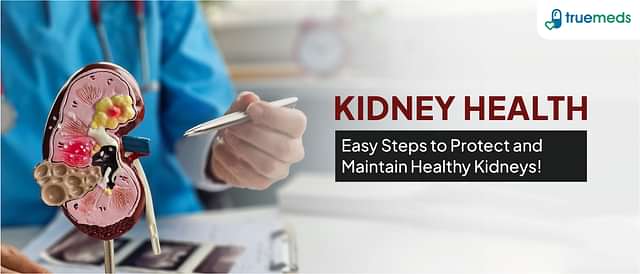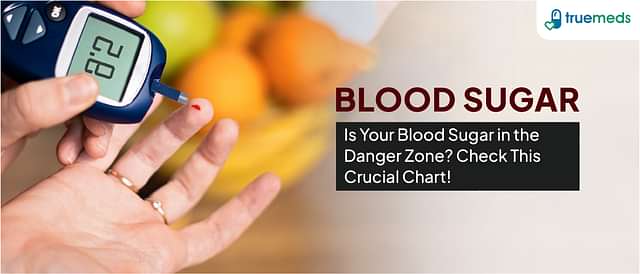Pulmonary arterial hypertension
Pulmonary arterial hypertension is a severe and progressive condition characterised by elevated blood pressure in the pulmonary arteries. Left untreated, pulmonary arterial hypertension can lead to right heart failure and potentially fatal outcomes, making early diagnosis and treatment crucial.
Last updated on : 16 Jul, 2025
Read time : 16 mins

Overview of Disease
Pulmonary arterial hypertension is a rare and chronic condition that affects the pulmonary arteries, leading to high blood pressure in the lungs. This increased pressure puts strain on the right side of the heart, causing it to work harder to pump blood through the lungs. If left untreated, pulmonary arterial hypertension can result in right heart failure and potentially fatal outcomes. It is essential to understand and educate yourself about this severe and progressive condition, emphasising the importance of early diagnosis and treatment.
What is Pulmonary arterial hypertension
Pulmonary arterial hypertension is a condition where the blood pressure in the pulmonary arteries is elevated. This increased resistance makes it more difficult for the right ventricle to pump blood through the lungs. Various factors, such as genetic mutations, certain medications, and underlying medical conditions, can cause pulmonary arterial hypertension.
Pulmonary arterial hypertension occurs when the pulmonary arteries become narrowed, thickened, or stiffened, leading to increased resistance against which the right ventricle must pump blood. This can be due to endothelial cell dysfunction, promoting vasoconstriction, cellular proliferation, and thrombosis. The pathogenesis involves an imbalance between mediators that influence vascular tone, cellular growth, and coagulation, such as thromboxane A2, endothelin-1, and serotonin, and those that counterbalance these effects, such as prostacyclin, vasoactive intestinal peptide, and nitric oxide. Understanding the various stages and underlying mechanisms of pulmonary arterial hypertension is crucial for accurate diagnosis and effective treatment.
Key Factors about Pulmonary Arterial Hypertension
| Category | Details |
| Also Referred as |
|
| Commonly Occurs In |
|
| Affected Organ |
|
| Type |
|
| Common Signs |
|
| Consulting Specialist |
|
| Treatement Procedures |
|
| Managed By |
|
| Mimiciking Condition |
|
Symptoms of Pulmonary Arterial Hypertension
The symptoms of pulmonary arterial hypertension can vary depending on the stage of the disease but commonly include:
Difficulty breathing, especially during physical activity
Fatigue and weakness
Chest pain or pressure
Swelling of the ankles, legs, and abdomen (oedema)
Bluish discolouration of the lips and skin (cyanosis)
Dizziness or fainting spells (syncope)
How Pulmonary Arterial Hypertension Affects Your Body
Pulmonary arterial hypertension is a progressive condition that primarily affects the blood vessels in the lungs. As the condition worsens, the small arteries in the lungs become narrower and stiffer, making it increasingly difficult for blood to flow through them. This leads to high blood pressure in the pulmonary arteries, which places additional strain on the right side of the heart. Over time, the right ventricle must work harder to pump blood through the narrowed arteries, causing it to enlarge and weaken. If left untreated, pulmonary arterial hypertension can eventually lead to right-sided heart failure. Moreover, the reduced blood flow to the lungs means that less oxygen is available to be delivered to the body's organs and tissues, resulting in symptoms such as shortness of breath, fatigue, and dizziness. As the condition progresses, it can significantly impact an individual's quality of life and overall health; these symptoms may worsen and become more noticeable even during rest. Recognising the signs and symptoms of pulmonary arterial hypertension is essential for early diagnosis and prompt treatment to improve patient outcomes and quality of life.
Stages of Pulmonary Arterial Hypertension
The following classification outlines the varying degrees of physical activity limitations and associated symptoms experienced by individuals:
Class 1: Individuals experience no restrictions on physical activity and do not have symptoms during regular activities or at rest.
Class 2: There is a mild limitation on physical activity, with noticeable symptoms occurring during regular activities but not at rest.
Class 3: Significant limitations on physical activity are present, with symptoms arising from minimal exertion and during regular activities, though not at rest.
Class 4: Individuals are unable to engage in any physical activity without experiencing symptoms, which are also noticeable during periods of rest.
Causes of Pulmonary Arterial Hypertension
Pulmonary arterial hypertension can be caused by a variety of factors, some of which are still not fully understood. The most common causes include:
Idiopathic pulmonary arterial hypertension: In many cases, no clear cause can be identified, and the condition is referred to as idiopathic pulmonary arterial hypertension.
Genetic mutations: Certain genetic mutations, such as those affecting the BMPR2 gene, can lead to the development of pulmonary arterial hypertension.
Associated medical conditions: Pulmonary arterial hypertension can be associated with other medical conditions, such as scleroderma, lupus, and chronic liver disease.
Medication-induced pulmonary arterial hypertension: Certain medicines, particularly methamphetamine, can cause pulmonary arterial hypertension by damaging the blood vessels in the lungs.
Congenital heart disease: Some heart problems present at birth, such as ventricular septal defects, can increase the risk of developing pulmonary arterial hypertension later in life.
Other conditions: Pulmonary arterial hypertension has also been linked to HIV, thyroid disorders, and glycogen storage disease, among other conditions.
Risk Factors
Several factors can increase an individual's risk of developing pulmonary arterial hypertension. These risk factors include:
Age: Although pulmonary arterial hypertension can develop at any age, it is most commonly diagnosed in people between the ages of 30 and 60.
Family history: Having a family member with pulmonary arterial hypertension or a related condition can increase an individual's risk of developing the disease.
Obesity: Being overweight or obese has been linked to an increased risk of developing pulmonary arterial hypertension.
Smoking: Cigarette smoking can damage the blood vessels in the lungs, increasing the likelihood of developing pulmonary arterial hypertension.
Blood-clotting disorders: Conditions that cause blood clots to form in the lungs, such as deep vein thrombosis, can lead to the development of pulmonary arterial hypertension.
Complications
Pulmonary arterial hypertension is a serious condition that can lead to several life-threatening complications if not managed properly.
Cardiac complications
Right ventricular failure: The increased pressure in the pulmonary arteries can cause right ventricular hypertrophy and eventually right-sided heart failure, a common cause of mortality in pulmonary arterial hypertension patients.
Cardiac Arrest/Sudden Death: Patients with critically compromised haemodynamics or decompensated right heart failure are at risk of cardiac arrest and sudden death.
Arrhythmias: Supraventricular and ventricular arrhythmias are frequent and can lead to rapid clinical deterioration, hospitalisation, or even sudden death.
Vascular complications
Pulmonary artery dissection: A rare but potentially catastrophic complication that can rupture into the pericardium, causing tamponade.
Pulmonary artery rupture: Another life-threatening complication that can occur spontaneously or iatrogenically during catheterisation.
Left Main Compression Syndrome: Extrinsic compression of the left main coronary artery by an enlarged pulmonary artery trunk can cause angina, left ventricular dysfunction, and sudden cardiac death.
Pulmonary complications
Haemoptysis: Coughing up blood or blood-stained mucus, often due to bronchial circulation, which can be life-threatening if not treated promptly.
Pulmonary embolism: Acute obstruction of the pulmonary vasculature can lead to a rapid increase in right ventricular pressure and volume overload, resulting in ischemia or myocardial infarction.
Other complications include pericardial effusion and tamponade, as well as increased susceptibility to infections, which can worsen right heart failure and lead to death. Preventing these complications is crucial for the long-term management of pulmonary arterial hypertension.
Prevention of Pulmonary Arterial Hypertension
Preventing pulmonary arterial hypertension involves addressing the underlying causes and risk factors.
Lifestyle modifications
Avoid Smoking and Illicit substances: These habits increase the risk of developing pulmonary arterial hypertension.
Healthy diet and exercise: Maintaining a healthy lifestyle can help manage conditions that contribute to pulmonary arterial hypertension, such as obesity and high blood pressure.
Manage stress: Chronic stress can worsen pulmonary arterial hypertension symptoms, so finding ways to reduce stress, such as through relaxation techniques or therapy, is important.
Early Detection and Treatment of Underlying Conditions
Congenital heart disease: Regular monitoring and timely treatment of congenital heart defects can help prevent the development of pulmonary arterial hypertension.
Connective tissue disorders: Early diagnosis and management of conditions like scleroderma and lupus can reduce the risk of developing pulmonary arterial hypertension.
Liver disease: Treating underlying liver conditions, such as cirrhosis or portal hypertension, can help prevent the development of portopulmonary hypertension, a type of pulmonary arterial hypertension.
Medication management
Avoid Certain Medications: Some medications, such as appetite suppressants and selective serotonin reuptake inhibitors (SSRIs), have been associated with an increased risk of pulmonary arterial hypertension. Consult with a doctor before starting any new medications.
Monitor High-Risk Medications: If taking medications known to increase the risk of pulmonary arterial hypertension, such as dasatinib or interferon, regular monitoring for signs and symptoms of pulmonary arterial hypertension is essential.
Diagnosis & Tests
Diagnosing pulmonary arterial hypertension involves a combination of clinical evaluation, imaging studies, and invasive tests.
Clinical evaluation
Medical history: A thorough review of the patient's medical history, including symptoms, risk factors, and family history of pulmonary arterial hypertension or related conditions.
Physical examination: Assessment of vital signs, heart and lung sounds, and signs of right heart strain, such as jugular venous distension and peripheral oedema.
Functional class assessment: Evaluation of the patient's functional capacity using the World Health Organization (WHO) functional classification system.
Non-invasive tests
Echocardiography: A key screening tool that can estimate pulmonary artery pressure, assess right ventricular function, and detect other cardiac abnormalities.
Chest X-ray: May show enlarged pulmonary arteries and right heart chambers, but is not specific for pulmonary arterial hypertension.
Pulmonary function tests: Can help rule out lung diseases as a cause of pulmonary hypertension and assess the severity of any underlying lung disease.
Ventilation/perfusion (V/Q) scan: Used to rule out chronic thromboembolic pulmonary hypertension (CTEPH) as a cause of pulmonary hypertension.
Invasive tests
Right heart catheterisation (RHC): The gold standard for diagnosing pulmonary arterial hypertension, RHC directly measures pulmonary artery pressure, cardiac output, and pulmonary vascular resistance.
Vasoreactivity testing: Performed during RHC to identify patients who may benefit from calcium channel blocker therapy.
Pulmonary angiography: Invasive imaging study that can detect pulmonary artery stenosis, obstruction, or other abnormalities.
A combination of these tests, along with a comprehensive clinical evaluation, is essential for accurately diagnosing pulmonary arterial hypertension and determining the most appropriate treatment approach.
Treatment & Management
The treatment of pulmonary arterial hypertension (PAH) is personalised based on the severity of symptoms, underlying causes, response to earlier therapies, and overall cardiovascular health. A multidisciplinary approach is often used, involving vasodilators, supportive medicines, and lifestyle modifications to ease symptoms, slow disease progression, and improve quality of life.
1. Vasodilators
Vasodilators are often the cornerstone of PAH treatment. They help widen the blood vessels in the lungs to reduce pressure on the heart and improve oxygen delivery.
- Epoprostenol: A continuous intravenous prostacyclin that dilates pulmonary arteries and improves exercise tolerance in severe PAH.
- Treprostinil: A prostacyclin analogue that improves blood flow and reduces symptoms; can be given via injection, inhalation, or orally.
- Iloprost: An inhaled vasodilator used several times a day to relax pulmonary arteries and relieve breathlessness.
2. Endothelin Receptor Antagonists
These medicines block endothelin, a chemical that causes blood vessel narrowing, thereby reducing pulmonary artery pressure.
- Bosentan: A dual endothelin receptor antagonist that lowers vascular resistance and delays disease progression.
- Ambrisentan: A selective endothelin receptor blocker that improves exercise capacity and lowers blood pressure in the lungs.
3. Phosphodiesterase-5 Inhibitors
These oral medicines work by relaxing lung artery muscles and enhancing natural vasodilators in the body.
- Sildenafil: It enhances nitric oxide signalling to reduce pulmonary artery pressure and improve exercise ability.
- Tadalafil: It Ppovides long-acting vasodilation to support breathing and daily activity in patients with PAH.
4. Calcium Channel Blockers
Used only in a subset of patients who respond to vasoreactivity testing, these medicines help relax pulmonary vessels.
- Diltiazem: It is a rate-controlling calcium channel blocker that may improve exercise tolerance in vasoreactive patients.
- Nifedipine: It is a long-acting agent that helps reduce pulmonary vascular resistance in select cases.
5. Blood Thinners
Anticoagulants reduce the risk of clot formation in narrowed pulmonary vessels, a potential complication in PAH.
- Warfarin: An oral blood thinner used to prevent thrombosis; requires regular INR monitoring for safety and efficacy.
6. Diuretics
Diuretics help control fluid overload and ease symptoms like swelling, particularly in patients with right heart dysfunction.
- Furosemide: A loop diuretic that removes excess fluid to reduce leg swelling and lung congestion.
- Bumetanide: A potent diuretic that offers relief from fluid buildup when furosemide is insufficient.
- Spironolactone: A potassium-sparing diuretic that supports long-term fluid management and reduces cardiac workload.
7. Cardiac Glycosides
These medicines are used to support heart function in right-sided heart failure, often associated with advanced PAH.
- Digoxin: Strengthens the heartbeat and may improve symptoms and rhythm control in PAH with cardiac dysfunction.
8. Lifestyle and Dietary Choices
Lifestyle modification is essential for optimising PAH management and enhancing daily functioning.
- Low-sodium diet: Helps minimise fluid retention and reduce strain on the heart.
- Controlled activity: Gentle exercise improves endurance without overburdening the heart and lungs.
- Oxygen therapy: Prescribed in some patients to improve oxygenation and reduce shortness of breath.
- Altitude avoidance: Staying at lower elevations helps prevent exacerbation of symptoms due to reduced oxygen levels.
Living with Disease
A pulmonary arterial hypertension diagnosis necessitates several key lifestyle changes to promote overall health and well-being:
Quit smoking and avoid secondhand smoke exposure to reduce strain on the lungs and heart.
Engage in safe, low-impact physical activities as tolerated. Pulmonary rehabilitation programs can provide guidance on appropriate exercise.
Eat a heart-healthy diet low in saturated and trans fats and high in fruits, vegetables, whole grains, and lean proteins.
Avoid exposure to high altitudes and hot tubs/saunas, which can exacerbate symptoms.
Attend regular check-ups with the pulmonary arterial hypertension care team to track disease progression, adjust therapies as needed, and receive important screenings and vaccinations.
When to See a Doctor?
Individuals experiencing symptoms suggestive of pulmonary hypertension, such as shortness of breath, fatigue, dizziness, chest pain, and swelling in the ankles or legs, should promptly consult with a doctor. Early diagnosis and treatment are key to slowing disease progression and improving outcomes. Current patients with pulmonary arterial hypertension should contact their care team if they notice worsening or new symptoms, as this may signal a need to adjust treatment. It is also crucial to keep all regularly scheduled appointments, even when feeling well, to allow close monitoring of pulmonary arterial hypertension over time. By staying alert to red flags and maintaining open communication with doctors, patients with this complex condition can achieve the best possible management of their health.
Key Takeaways
Pulmonary arterial hypertension is characterised by high blood pressure in the lungs, leading to shortness of breath, fatigue, chest pain, and other symptoms.
Risk factors include family history, congenital heart disease, connective tissue disorders, and certain medications or toxins.
Diagnosis involves a combination of physical examination, imaging tests, and other invasive tests.
Treatment typically involves pulmonary arterial hypertension-specific medications, supportive treatments, and lifestyle modifications.
In severe cases, interventional or surgical options, such as atrial septostomy or lung transplant, may be considered.
Regular monitoring and follow-up with doctors are essential for managing pulmonary arterial hypertension effectively.
Adopting a healthy lifestyle, including quitting smoking, engaging in safe physical activities, eating a balanced diet, and managing stress, can help improve quality of life.
Joining a support group can provide valuable emotional support and practical advice for living with pulmonary arterial hypertension.
FAQs
What is the primary reason for developing pulmonary arterial hypertension?
Pulmonary arterial hypertension can stem from various factors, including connective tissue diseases, congenital heart defects, portal hypertension, HIV infection, certain medications, or idiopathic causes where the reason is unknown.
Is there a cure for pulmonary hypertension?
Currently, there is no cure for pulmonary hypertension. Treatment aims to manage symptoms, address the underlying cause if identified, and prevent further damage to the lungs.
How does pulmonary hypertension differ from high blood pressure?
Pulmonary hypertension specifically affects the pulmonary arteries carrying blood from the heart to the lungs, while high blood pressure involves the systemic circulation supplying the rest of the body.
What are the chances of survival for individuals with pulmonary hypertension?
Survival rates for pulmonary hypertension vary considerably based on the cause, severity, and effectiveness of treatment. Early diagnosis and management can significantly improve outcomes, but untreated pulmonary hypertension can be life-threatening.
What does stage 4 pulmonary hypertension entail?
Stage 4 pulmonary hypertension, the most severe classification, is characterised by debilitating symptoms present even at rest, greatly limiting physical activity and requiring aggressive treatment to manage symptoms and slow disease progression.
Is it possible to live for 30 years with pulmonary hypertension?
While some individuals with pulmonary hypertension may survive for an extended period, the likelihood of living for 30 years depends on numerous factors, including the cause, severity, and response to treatment.
Does drinking water help alleviate pulmonary hypertension?
Staying hydrated is essential for overall health, but there is no specific evidence suggesting that drinking water directly reduces the severity of pulmonary hypertension or its symptoms.
References
Galiè, N., Humbert, M., Vachiery, J.-L., Gibbs, S., Lang, I., Torbicki, A., Simonneau, G., Peacock, A., Vonk Noordegraaf, A., Beghetti, M., Ghofrani, A., Gomez Sanchez, M. A., Hansmann, G., Klepetko, W., Lancellotti, P., Matucci, M., McDonagh, T., Pierard, L. A., Trindade, P. T., . . . Hoeper, M. M. (2016). 2015 ESC/ERS guidelines for the diagnosis and treatment of pulmonary hypertension. European Heart Journal, 37(1), 67–119. https://doi.org/10.1093/eurheartj/ehv317
National Heart, Lung, and Blood Institute. (n.d.). Pulmonary hypertension. https://www.nhlbi.nih.gov/health-topics/pulmonary-hypertension
Simonneau, G., Montani, D., Celermajer, D. S., Denton, C. P., Gatzoulis, M. A., Krowka, M., Williams, P. G., & Souza, R. (2019). Haemodynamic definitions and updated clinical classification of pulmonary hypertension. European Respiratory Journal, 53(1), 1801913. https://doi.org/10.1183/13993003.01913-2018
Lai, Y. C., Potoka, K. C., Champion, H. C., Mora, A. L., & Gladwin, M. T. (2014). Pulmonary arterial hypertension: The clinical syndrome. Circulation Research, 115(1), 115–130. https://doi.org/10.1161/CIRCRESAHA.115.301146
Humbert, M., Sitbon, O., Guignabert, C., Savale, L., Boucly, A., Gallant-Dewavrin, M., McLaughlin, V., Hoeper, M. M., & Weatherald, J. (2023). Treatment of pulmonary arterial hypertension: recent progress and a look to the future. The Lancet Respiratory Medicine, 11(9), 804–819. https://doi.org/10.1016/s2213-2600(23)00264-3
Latest health articles
Top Health Essentials
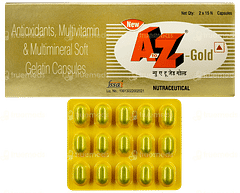

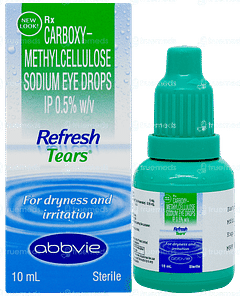

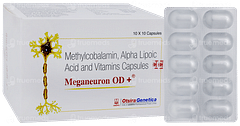









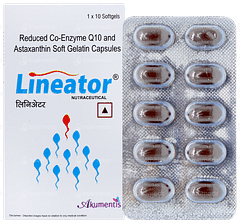


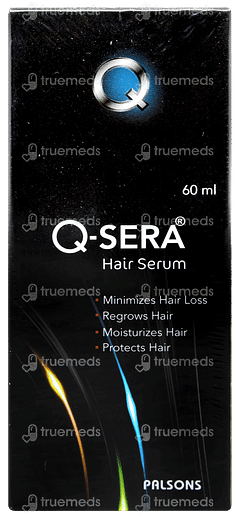


Disclaimer
Top-Selling Medicines:
...View more
Top-OTC medicines:
...View more
Company
About UsHealth ArticleHealth StoriesDiseases & Health ConditionsAyurvedaAll MedicinesAll BrandsNeed HelpFAQSecuritySubscribe
Registered Office Address
Grievance Officer
Download Truemeds
Contact Us
Our customer representative team is available 7 days a week from 9 am - 9 pm.
v4.8.0
2025 - Truemeds | All rights reserved. Our content is for informational purposes only. See additional information.
Our Payment Partners













